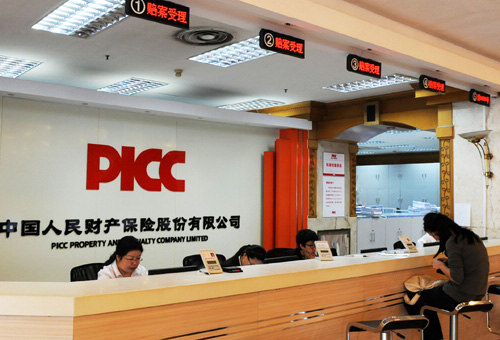|
 |
|
FREE UP INSURERS: A client at the Peoples Insurance Co. of China's branch in Qingdao, Shandong Province, in September 2011 (LI ZIHENG) |
Investment restrictions will be loosened on the country's 6-trillion-yuan ($944.4 billion) insurance funds with the release of 13 new policies. These policies, which are being formulated by the China Insurance Regulatory Commission (CIRC), will soon be implemented.
During a training class from June 11-12 for senior managers of insurance assets management companies, the CIRC promised to make the sector more market-oriented by breaking up institutional obstacles, increasing investment instruments and optimizing the assets management platform.
The new policies will broaden the overall investment territory, covering both domestic and overseas investment, and increase the types of financial products insurers can buy, including bonds, commercial banks' financial products, financial derivatives and private equity investment.
This means insurance funds investment will march toward a totally market-oriented and more flexible operation pattern, said Chen Daofu, a research fellow of the Development Research Center of the State Council.
The new policies will cover almost all investment instruments that insurers have had their eyes on for years. Under the new policies, insurers can start margin trading businesses, trade domestic and foreign financial derivatives, broaden their overseas investment scope and expand the domestic investment scope in equity and real estate.
At the end of the first quarter of 2012, the insurance sector's bank deposits totaled 2.07 trillion yuan ($325.82 billion) and the amount of insurance funds used for investment was 3.82 trillion yuan ($601.27 billion), according to the CIRC. In 2011, the average return rate of insurance funds investment was only 3.6 percent.
Today, assets of insurers are managed by affiliated assets management companies, ending up with a low rate of return due to the lack of competition. Under the new policies, insurers can entrust securities companies and fund companies to manage their assets, which can enhance the return rate after the introduction of competition in the area, said a report from Orient Securities Co. Ltd.
New regulatory mindset
Xiang Junbo, CIRC Chairman, has reiterated on many occasions that CIRC will loosen restrictions for insurance funds investment by broadening the investment scope of insurers and simplifying approval procedures. Insurers will make independent decisions, conduct independent investment and shoulder risks by themselves. The new policies are considered a watchdog's resolution.
The policies show CIRC's regulatory mindset has changed, according to a report of Zero Power Intelligence, an industrial research agency based in Shenzhen, Guangdong Province.
Insurers previously granted 80 percent of their assets to the asset management platforms they established. The whole sector combined independent investment, asset management companies and entrusted investment. Over the past several years, CIRC has successively expanded the investment scope and played a vital role in bolstering the sector's robust development, according to the report.
The insurance sector, like most other industries and business environments, has not been immune to the backlash from the global financial crisis. In the first four months of 2012, the insurance premium increased 3.75 percent, a relatively slow speed. The return rate was only 1.21 percent. The profit of the whole sector was 24.8 billion yuan ($3.9 billion), a 19-percent year-on-year drop.
China's insurance sector now has 10 groups, 156 large insurance companies, over 100 small and medium-sized ones and 13 assets management companies. The lagging investment ability of insurers has become a major obstacle for the sector's future development.
How should China increase the investment ability of insurers? The CIRC has chosen a more open way, said the report of Zero Power Intelligence.
| 